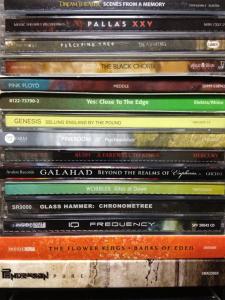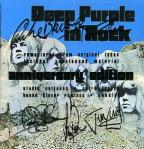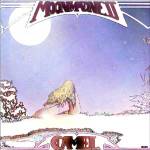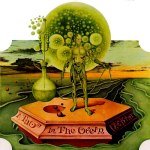In part one, we looked at the notion that the album is dying or dead and referred to quotes by Alex Lifeson of Rush and Roger Glover of Deep Purple. We then considered several comments made on articles and blog posts from four different web sites. Now let’s look at two more posts about the death of the album.
Record Breaking; is the album format dead? – The Guardian
The Cult’s Ian Astbury claims that “iTunes destroyed albums – the whole idea of the album. Nobody buys albums, it’s been proven.” Well, I am somebody and I have bought a heinous amount of albums in the last two years – in CD format. And looking at the reviews on Prog Archives and Metal Music Archives where I am a member of both, plenty of people are still buying albums.
The author says that the CD was the first blow to the album as with a simple touch one could skip over tracks instead of getting up to move the stylus of the record player. And now MP3 files have even made the CD obsolete.
“Last November, the rock writer Chuck Klosterman claimed Guns N’ Roses ‘Chinese Democracy’ would be ‘the last album that will be marketed as a collection of autonomous-but-connected songs, the last album that will be absorbed as a static manifestation of who the band supposedly is, and the last album that will matter more as a physical object than as an internet sound file. This is the end of that.” Thankfully the author disagrees and says there is still recognition for the album for the time being.
I personally love a new album because it’s like a smorgasbord of songs where I can listen through a few times and pick out my favourites and then go back again later and enjoy the whole thing once more. I don’t think listening to your favourite songs on an album over again while only spinning the whole thing from time to time invalidates the album format. For me, each album, along with its cover, is a unified whole. Even if I only like a few songs, they still belong to that statement that the band or artist was trying to make at that time.
Is the Album Dead? – The Guardian
Facts and figures about album sales slumps; claims that everyone only wants singles; YouTube, Spotify, and iTunes being accused of the perpetrators; and this point: “Album sales, analysts say, are further threatened by fragmenting of genres, the poor quality of music and shopping chains carrying a limited selection of discounted releases to bring in customers.” Yes, genres are and have been fragmenting since the beginning of rock. It’s just that in the 60’s it was all called pop and the various labels came after the genres had evolved into distinctive classes with their own uniforms. Now big pop artists are competing for the interest of money-spending listeners who have their ears tuned to lesser know artists in subgenres.
Streaming is eroding album sales, they say, but to what degree is streaming contributing to music revenues? It seems the record industry is getting behind streaming. The final comment by one Bob Lefsetz puts the onus back on the listener: “You put out these albums and in almost every case, the public moves on in a matter of weeks! A few bought it, they heard it, and they’re satisfied. The rest of the public is just waiting for a hit single… they’ll tap their toes and snap their fingers and ask, ‘What else have you got?’” Or is it up to the bands and artists to keep sincerely working at their music and in that way attract real fans who can’t wait for the next album?
From the Vinyl Age to the Plastic
You could consider a lot of things about the supposed death of the album – new digital formats, a throw-away society not interested in taking time to appreciate an album, singles being the re-crowned king. In the 1970’s albums came out quickly. Bands were often releasing three albums within two years and then recording the albums in less than two weeks, which sometimes included writing the songs as well. When Black Sabbath recorded their debut, it was largely for the purpose of letting the public know what they were up to after having given up on Earth (their former band name) and begun focusing on a new heavier style of music.
I’d say that the album really came alive in the late sixties and endured well into the nineties. Look at the top ten best selling albums and see how many came before the New Millennium. But there are still plenty of great albums being released on CD, albeit for smaller audiences who appreciate that style of music. In Japan, where I live, the music industry keeps churning out singles and albums and best of albums constantly. In the western market, bands are no longer releasing albums every eight months but now every two to three years on average I would guess. Then are they really throwing on just mediocre songs to fill in the between the good ones? If a band has only a dozen songs to show for their efforts after a few years then how can one expect that the quality is lower just because the music released as a 70-minute CD and not a 40-minute vinyl album?
New Approaches to Encourage CD Sales
One interesting note is that bands and artists are not limited to a release of 10 to 12 songs. A lot of bands have been releasing new albums with new tricks to appease both the casual buyer and the die hard fan. Some bands now release a standard CD album and a double disc version that includes the album on disc one and bonus live tracks, additional studio tracks, or a DVD on disc two. Digipak packaging is like a book (like the old 78’s but smaller) and may also include a booklet with the lyrics, a message from a band member, and lots of artwork. For people who appreciate this (like me) the death of the album altogether, let alone the death of the CD, would be a very large disappointment.
Another promotion trick I heard about recently concerning the American pop group R5 is that fans can get a ticket for a meet-and-greet or autograph signing event when they buy a CD. I heard of one girl who bought five of the same CD just to get two tickets to one event and three for another. While this particular case makes the promoter look cunning and the girl rather foolish, the idea of encouraging CD sales by offering something extra is not bad.
One band that has embraced a variety of approaches is the Canadian power-pop group, Sloan. All their regular CD albums are available for download from their web site; however, their “Hit & Run” EP and “B-Sides Win” compilation of b-sides and rarities are not available on CD. This year they also released for download only an EP of 80’s punk rock covers. But they do not stop there. Sloan also recently released a 3-disc vinyl package for the 20th anniversary of their second album “Twice Removed”, which includes two extra vinyl discs of alternate versions of songs, studio outtakes, and early versions of later songs. Vinyl or digital download – your only two options for this baby. And in keeping with the vinyl theme, they have also begun a live bootleg series with a limited pressing of 500 marked copies. The most recent release, a bootleg of a concert in Japan in 2002, sold out in a week.
Loss of Faith in the CD Album?
While pop music may be suffering in CD sales and leading analysts to believe the album is dead, I’d say you just have to look outside of the pop arena. For all the bands I follow, the album released on a CD is still the format of choice, although I have noted at least two cases where the album was made available on iTunes or Amazon for download purchase first and then later released on CD. As for losing revenue due to free music sharing, most bands say that they make their money from gigging anyway. In answer to that, the live DVD is now a popular format of many artists. The important thing is keeping an interested audience and finding new ways to attract consumer spending, and doing so by producing quality music and performances.
One other note regarding single sales on iTunes, Rush released two songs on iTunes a year before the release of their latest album “Clockwork Angels” and it seems that making these songs available as well as performing them in concert helped create a greater interest in the album (it went to #2 on Billboard in the first week of release with sales of 103,000 units and stayed in the top 100 for many weeks). Conversely, Deep Purple’s label discouraged them from playing any new songs live in case it would spoil potential album sales. In the first week they only sold 4,000 albums in the U.S. but reached #1 in Germany and Austria.
So, is the album dead or dying? I don’t believe so. It will take two generations to shift the preference away from the album concept. One generation – the young people now – will have to ignore it and then the next generation will not know it if artists decide to give up on the format. But many parents and grandparents are turning their kids and grandkids on to classic albums and legendary groups and bringing them to concerts. Both Rush and Deep Purple have noted the surging numbers of new young fans. As long as artists and music fans still share a love for the album – released in whatever medium – it is not going to go away so quickly.











